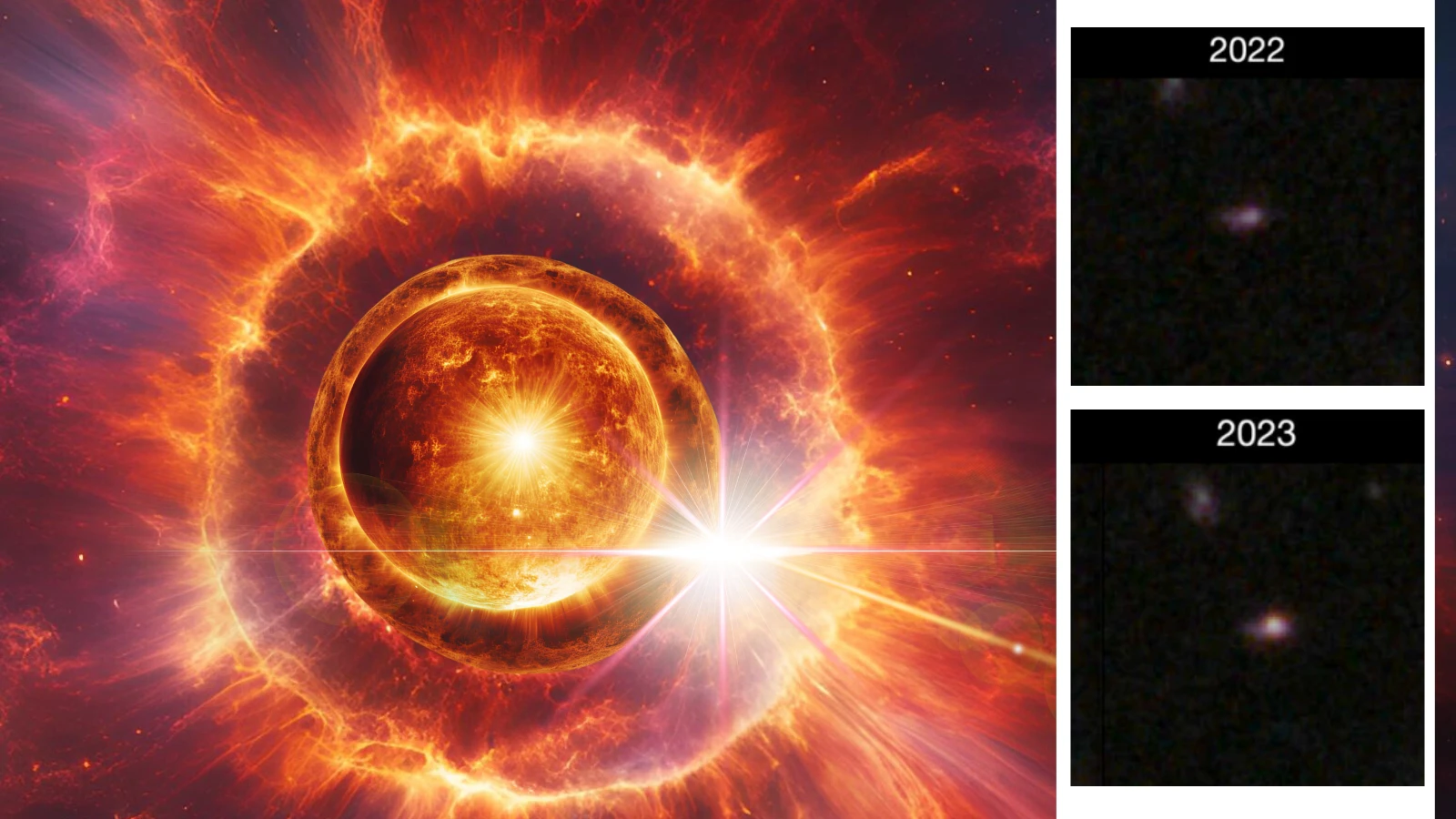Astronomers have identified one of the earliest and most energetic supernovas ever seen, providing unprecedented insight into the universe’s formative years.
Key Points at a Glance
- Discovery: The James Webb Space Telescope (JWST) detected AT 2023adsv, a supernova that erupted 11.4 billion years ago.
- Unparalleled Energy: The supernova’s explosive energy surpasses most modern counterparts, hinting at unique stellar properties in the early universe.
- Cosmic Milestone: AT 2023adsv offers clues about Population III stars—the first stars to form in the universe.
- JWST and the Future: The discovery is part of the JADES program, with future telescopes set to enhance early-universe exploration.
On January 14, 2025, researchers unveiled a groundbreaking discovery by the James Webb Space Telescope (JWST): AT 2023adsv, a supernova that erupted 11.4 billion years ago. This stellar explosion occurred in a galaxy that existed merely 2 billion years after the Big Bang, making it one of the oldest supernovas ever observed.
AT 2023adsv is extraordinary not just because of its age, but also its sheer magnitude. The star that exploded was a behemoth, approximately 20 times the mass of the Sun. Its death unleashed energy levels far exceeding those of most supernovas seen in the contemporary universe.
“The high explosion energy of AT 2023adsv could indicate that the properties of supernova explosions were fundamentally different in the early universe,” explained Takashi Moriya, a theorist from the National Astronomical Observatory of Japan.
AT 2023adsv provides a rare window into the universe’s earliest stellar generations. The star that triggered this supernova belonged to a class known as Population III stars, which are thought to have formed from primordial hydrogen and helium shortly after the Big Bang.
“These stars were massive, hot, and short-lived,” said David Coulter of the Space Telescope Science Institute. “Their explosive deaths enriched the cosmos with heavier elements, seeding the formation of subsequent generations of stars and galaxies.”
Population III stars played a vital role in shaping the universe, initiating the cosmic cycle of star birth, death, and rebirth. However, the lack of metals in these stars likely contributed to shorter lifespans and more violent deaths compared to their modern counterparts.
AT 2023adsv illustrates these unique characteristics. Its progenitor star lived in a relatively metal-poor environment and erupted with roughly twice the energy of a typical supernova caused by massive stars today.
The discovery of AT 2023adsv was made possible by the JWST Advanced Deep Extragalactic Survey (JADES). This program focuses on studying the formation and evolution of the earliest galaxies, often detecting supernovas at extreme distances.
“Studying distant supernova explosions is the only way to explore the individual stars that populated these early galaxies,” said Christa DeCoursey, a researcher at the University of Arizona.
So far, the JADES collaboration has identified over 80 ancient supernovas, each offering a glimpse into the universe’s formative epochs. With its sensitive infrared capabilities, JWST continues to push the boundaries of astronomical research, revealing phenomena that were previously undetectable.
In 2026, NASA’s Nancy Grace Roman Space Telescope is expected to join JWST in the hunt for ancient cosmic explosions. With a wide field of view, the Roman telescope will likely detect thousands of early supernovas, enabling JWST to study them in greater detail.
“The combination of these telescopes will revolutionize our understanding of the early universe,” said Coulter. “AT 2023adsv is just the beginning.”
As technology advances and observational techniques improve, discoveries like AT 2023adsv will continue to redefine humanity’s understanding of the cosmos, shedding light on the origins of stars, galaxies, and the very elements that make up our world.
